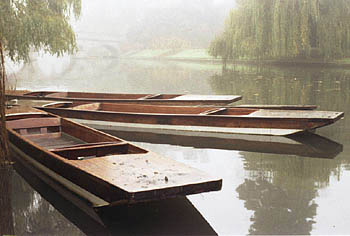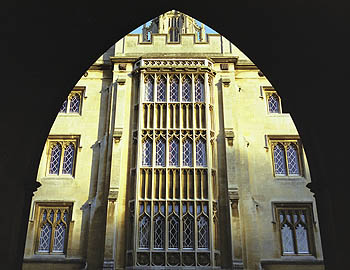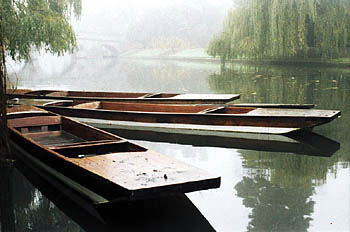"The
evolution of mankind has been greatly advanced throughout history by the
influence of images," begins Karl-Heinz Zahorsky in his introduction
to Silverfast at the beginning of the manual.
He goes on to claim "The tools are organised in such a way that even the novice user is able to produce great results easily. In the hands of an expert, these images will be insanely great!"
The closing paragraph is equally stirring stuff, "I am confident that Silverfast will successfully help you in making all your images look absolutely brilliant!"
I suppose you can be the judge of whether my images are insanely great, absolutely brilliant or merely great, and hence whether I'm a novice or an expert!
Anyway, Karl-Heinz, despite having a name which sounds distinctly like a supporting character out of Flash Gordon, is a very nice man and justly proud of his imaging software. I was very pleased that he sent me a copy of the Epson 2450 version for review after reading my test of the scanner.
|
Epson Twain |
Silverfast
|
Colours are tricky
One of the difficulties I had with writing the review of the Epson 2450 is that doing a good scan is not as easy as just sticking the print or film in the scanner and pressing start. There are numerous techniques involved and decisions to be taken along the way, so my sample images are a result of the combination of the Epson 2450's abilites as a scanner and my abilties as a scanner operator.
One of the major factors in getting a good scan is correctly using "unsharp masking" - a topic for another day.
One of the other major factors, illustrated in the examples above, is colour balance. The technicolour nightmare on the left is what you get if you put the film in the Epson and set it going using the Epson Twain scanner driver. Epson Twain is a bit of an Astramax Van in negative scanning terms - perfectly practical and gets you there but it's a bit rough and ready. What you really need if you want accurate colours is a bit of precision German software engineering - the rather more accurate version on the right is Silverfast's effort.
This is where Silverfast really comes in - getting good colours, brightness and contrast, especially from colour negative film, without the need for the user to spend a lot of time twiddling with colour controls.
Epson Twain

Silverfast

The above enlargements are at "Actual pixels" resolution with the scanner scanning at 2400dpi. Both images have been sharpened using unsharp mask in Photoshop. I had heard from more than one source that Epson Twain attempts to reduce grain at the expense of sharpness. However, from the above examples there seems little difference in grain or sharpness between the Epson and Silverfast scans. If anything the Silverfast scan looks slightly "cleaner" as far as grain is concerned.
The Mercedes Benz of Scanner Software
I suppose if Epson Twain is an Astramax van, Silverfast is a Mercedes Benz. It's a lot more expensive and clearly better quality, but at the end of the day they both get you where you're going. It seems to me that Silverfast is the scanning equivalent of Photoshop - it's the industry standard, hard-core application for the seriously fussy. However, Karl-Heinz is right - even a novice can use it to produce good results. Witness the following examples:
Epson Twain



Silverfast



All the above examples are colour negative film scanned with the Epson and Silverfast software with all automatic settings. With Silverfast I selected the film type. Epson Twain has no option to select film type, which may explain why the results are generally significantly less accurate. Perfect colours could eventually be achieved with either piece of software - but Silverfast gets you closer without you even having to touch a single colour control.
Do you need Silverfast for the Epson 2450?
I rarely use colour negative film and find that Epson Twain gives perfectly acceptable results with slide film. I was interested to know whether Silverfast could do a significantly better job of scanning medium format slide film than Epson Twain. In particular I was worried about the reports I had heard that Epson Twain deliberately sacrifices sharpness for smooth tones.
Epson Twain


Silverfast


I have done my best with both the Epson and the Silverfast scans to make them as sharp as possible using some fairly involved unsharp masking techniques. My conclusion is that both are equally sharp. It seems Epson Twain does not deliberately soften scans, despite the reports I had heard. So if like me you rarely use negative film and just want the best possible slide scans, you can probably live without Silverfast.
Some Silverfast practicalities
Silverfast comes in a variety of versions. The version I was sent for evaluation is Silverfast Ai for the Epson 2450, which I understand retails for $99, or $182 with IT8 calibration (see below). Different versions for different scanners cost different amounts. The Epson version seems quite a bargain in comparison to, for example, $569 for the Nikon Super Coolscan 8000ED version. We Epson owners can have industry standard scanning software cheaply as well as having a fine scanner for a bargain price!
Silverfast Ai scans in 48 bit mode and converts to 24 bit output. Two versions are supplied with the package - a Photoshop plugin and a Twain driver. The main difference seems to be that the Photoshop plugin "talks" to Photoshop better, and optimises scans for the colour space you have selected in Photoshop.
As well as the two versions which come with the Ai package
there is yet another version - Silverfast HD. This allows you to edit
48 bit scans after they have been scanned, rather than at the time of
scanning. I have not used Silverfast HD. Silverfast Ai will allow you
to scan in 48 bit mode, but then all the colour editing features are unavailable.
So if you want to have access from within Photoshop to the full 48 bit
data which your scanner is capable of producing, you can only make use
of Silverfast's features if you have the HD version... There is also another
option when you purchase Silverfast Ai - you can get a version with IT8
calibration. If you have the version with IT8 calibration, you can calibrate
your scanner to get more accurate scans. I do not have this feature on
the version I received so cannot comment on its usefulness.
I found the Silverfast user interface fairly simple - I avoided most of the hardcore controls (I'm not yet ready for my images to look absolutely brilliant!). It was not much different from Epson Twain to use. Speed wise, it was also pretty much the same. I understand that with some scanners Silverfast is significantly faster than the original manufacturer's software - not so with the Epson 2450.
One small difference which I very much appreciated is that, whereas whilst scanning Epson Twain insists on putting a blue progress bar on the screen which is always the "top" window, Silverfast will happily scan away in the background whilst you're surfing the web or doing something else (like writing this review). A minor point, but it would be worth $100 to me just for that feature!
If you're interested in how the interface looks and works, check out Ian Lyons' tutorials from the link at the bottom of this page.
The Bottom Line
Silverfast is the industry standard - it is the best scanning software available. It's a bit like that other industry standard monster, Photoshop, in that you aren't going to learn all it's features overnight. At the end of the day a skilled user can probably get exactly the same results from Epson Twain, but especially for colour negative work Silverfast gives you a worthwhile leg up and a decent starting point for making your own colour correction choices.
If you have an Epson 2450 scanner, in my opinion you can (if you know what you're doing) get the best out of it without having to shell out for Silverfast. However, if you want the industry standard for a bargain price or want decent results from colour negatives without lots of irritating fiddling around, I recommend you go to the Silverfast website and order yourself a copy. And you'll also be able to surf the net whilst waiting for your high-resolution scans to finish!
Silverfast SE, the cut-down version of Silverfast, comes bundled with the Epson 2450 in America. It's a pity we don't get that in the UK, but for only $100 I think the full version is well worth the consideration of more serious 2450 users.
I found this review difficult to write. It's a bit like trying to do a short review of Photoshop. It's such a powerful and complicated piece of software that if you can't figure out how to do what you want it's more likely to be down to your own ignorance rather than the software lacking the feature you require. I haven't really scratched the surface of what's possible. In the process of researching this review I have discovered a whole world of stuff I hadn't even thought about before - all useful for helping me improve my technique and I hope to share some more of my findings soon.
Silverfast links
Unlike the Epson 2450, Silverfast has been around for a while. There is lots of useful stuff on the web. Amongst the most useful is:
Silverfast website - find out more about Silverfast, including how to order.
Ian Lyons' Tutorials - extremely helpful site with step-by-step guide to using Silverfast as well as Photoshop and other software.
| [Home] | [About] | [Order Prints] | [Articles] | [World Map] |
